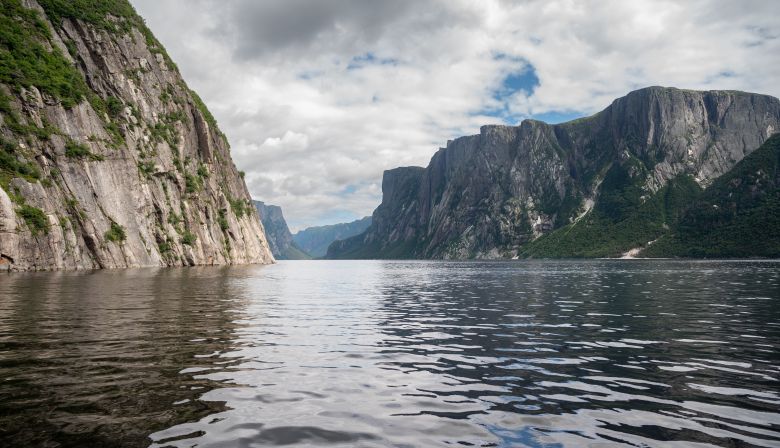
Subscribe & stay up-to-date with ASF


As the curtain falls on my time in Newfoundland, I’m overwhelmed by gratitude. The profound generosity of time, insights, and camaraderie from all those I’ve met has immeasurably enriched my spirit. These memories and lessons aren’t fleeting; they will undeniably influence every forthcoming chapter of my life. To everyone who has etched themselves into my journey, a heartfelt thank you.
At the forefront of these memories is Ben Pike, a young guide from Rocky Harbor. During my excursion on the mighty Humber River with Kastine Coleman, I asked for help finding captivating individuals to connect with on Newfoundland’s Northern Peninsula. Ben’s name was the first recommended. Though my initial attempts to reach him went unanswered, fate had other plans.
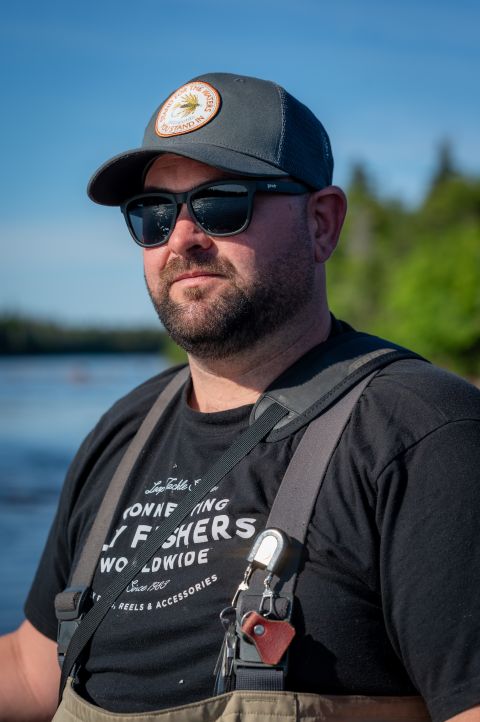
Upon my arrival in Rocky Harbour, the Gros Morne ranger station was a necessary pit stop for my park pass and fishing license. The excitement was palpable; I was about to embark on an unguided fishing journey for the first time. In pursuit of the best fishing locations, I sought the ranger’s advice. While fly fishing wasn’t his forte, he hinted at a local who could assist. As he reached for his phone, the familiar name “Ben Pike” flashed on the screen.
Laughing, Ben confessed during our initial rendezvous at Out East Adventures, “I noticed an unfamiliar Massachusetts number and shrugged it off as another telemarketer.” After sharing my ambitions and telling him of my prior efforts to explore and narrate local river tales, Ben agreed amiably, “Fair enough, let’s set out for a flick.”
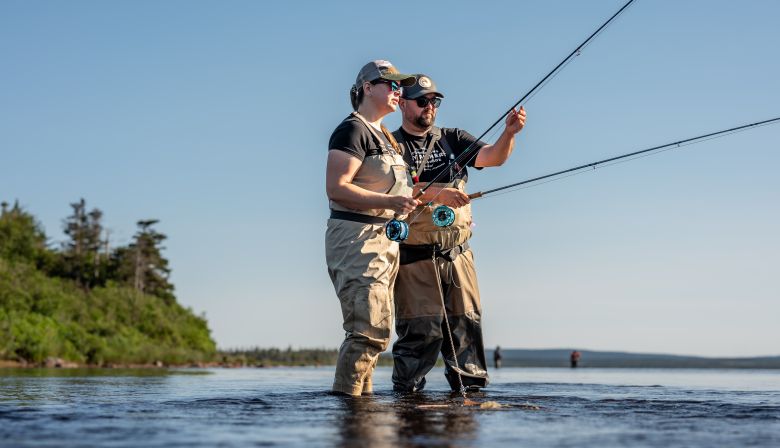
The following day saw us navigating towards Lomond River, armed with Reese’s cups and cigars—Ben’s secret weapons. While Portland Creek was his initial recommendation, my intrigue drew me to Lomond river and its reputedly sizable grilse. With candid honesty, Ben remarked, “The clear waters will greet us, but the fish? No promises.” His caution stemmed from the year’s alarmingly scanty grilse returns. Nonetheless, Ben graciously offered to unveil a few coveted spots, trusting my discretion. After all, as a Mainer, my stay was transient, posing no threat to his cherished pools.
Weeks prior, at Harry’s River, I’d seen my first glimpse of the alarming absence of salmon. But it was while navigating numerous pools on the Lomond without spotting a single salmon that the gravity of the situation hit me. “This pool usually has about 100 fish around this time,” lamented Ben, his tone heavy. Despite our repetitive disappointment, we soldiered on, fly casting even when hope seemed thin. Beneath Ben’s imposing exterior lay a heart profoundly connected to these waters. I could sense his distress, yet he brightened our journey with his tales. The man is a true gem.
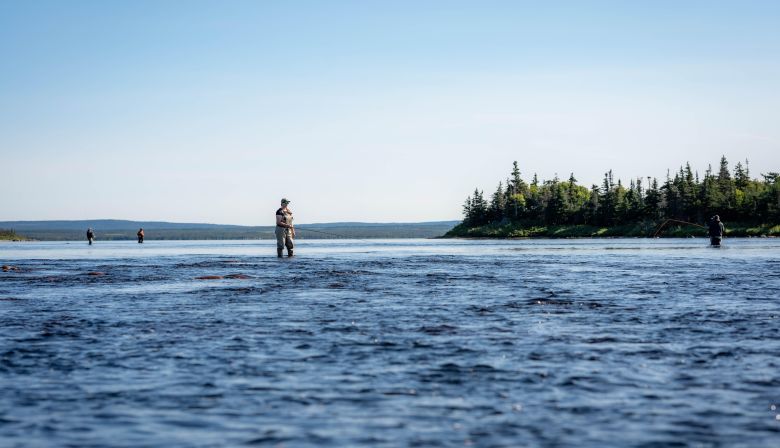
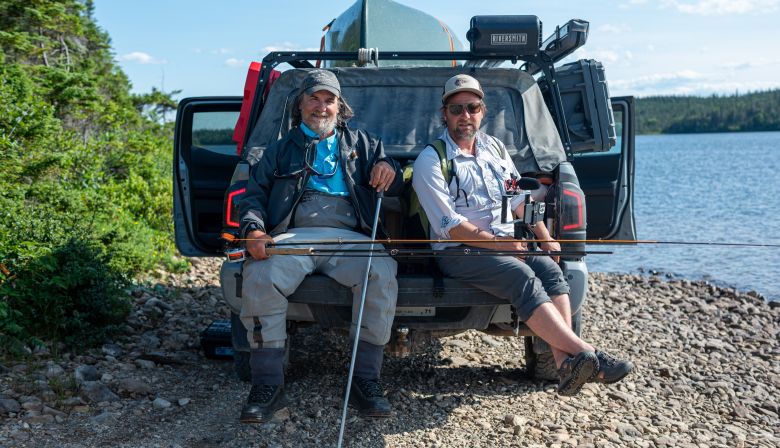
At the heart of our adventure, there we were — grilling moose meat with a touch of onions and garlic on my grandfather’s trusty cast iron pan, perched on my truck’s tailgate. That’s when Tim Pantzloff of Spey Co reels (check them out!) and Matt Olson crossed our path. Having spent a substantial eight weeks at the resort in roles as marketers and guides, the duo was instantly intrigued by my Indiana license plates. Learning about my association with ASF piqued their interest. Restricted to fishing between Portland Pond and the ocean all summer, the allure of new waters was irresistible. Our mention of the River of Ponds trip found eager volunteers in them.
Post our hearty meal and waving Alyssa goodbye, we journeyed towards River of Ponds with our new friends. Ben knew of a road alongside the pond that would allow us to reach Officer’s Pool — a stretch between the first and second ponds named in tribute to Lee’s frequent visits with military dignitaries. The finale of my Newfoundland escapades, this was a fitting climax. The pristine, cold waters mirrored our high spirits. As dusk approached, Ben, with an expert’s precision, directed Matt and Tim through each pool. Their determination was palpable — shuffling through their fly collection and employing traditional swings and riffle hitch tactics to coax a reaction. While we weren’t rewarded with any hooked fish, the occasional rise and a few grand jumps were enough to seal the day, and my trip as a whole, unforgettable.
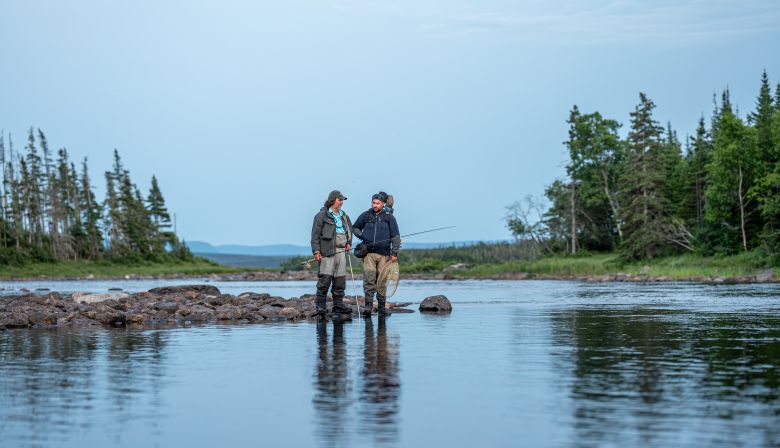
Thank you for being part of the Rivernotes community and tuning in each week as I navigate the stunning, rugged landscapes of salmon country. As always, share the Rivernotes blog with friends who might appreciate these stories. Each share and gift given becomes a ripple that could spark a wave of change.
Please consider contributing to ASF, HERE.
Also, I love hearing from you all, especially those of you who challenge me to do a better job! Please, always feel encouraged to reach out directly to Rivernotes@asf.ca or Pdore@asf.ca with comments, questions, or concerns!
Until next week, stay sharp, and tight lines!
Peter
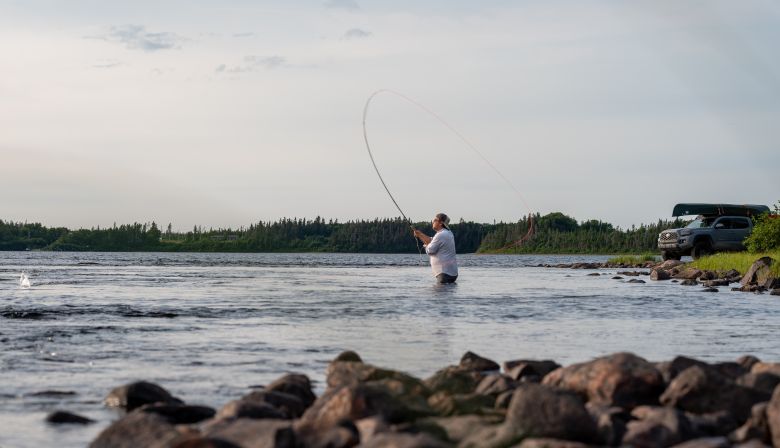
Abby Pond, Executive Director of Development, asks:
The season is upon us once more! It’s the perfect time to renew your ASF membership.
Recently, we surveyed our valued members to understand why they stand with us. A member eloquently shared, “RESULTS! The tangible, measurable outcomes from ASF’s efforts stand out. While other organizations talk, ASF delivers.”
If you haven’t already renewed or purchased your 2023 membership, you can do it online now and join all of us in saving wild salmon and wild rivers!
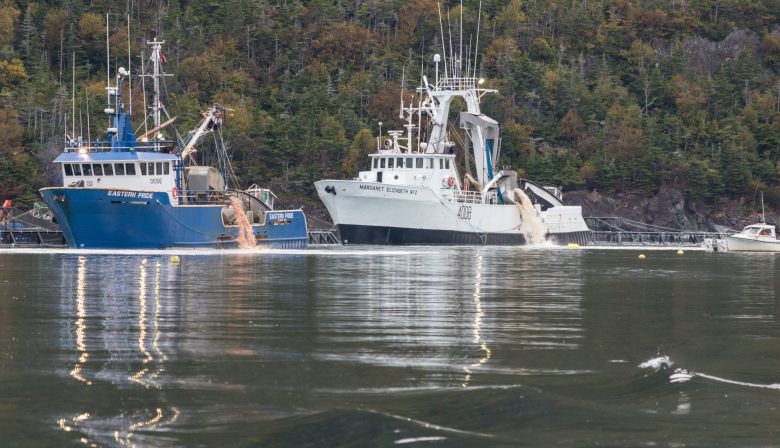
Wherever open net-pen salmon aquaculture exists in Atlantic Canada wild salmon populations are threatened or endangered and it’s more than coincidence. Decades of research show a relationship between the presence of the industry and decline in wild fish populations.
For wild Atlantic salmon, the stakes are incredibly high. Aquaculture salmon escape all the time and can interbreed with wild fish. These hybrid offspring can’t cut it in the wild. The result is population decline and collapse.
Right now the world’s biggest salmon aquaculture company, Mowi, is trying to add new cages and 2.2 million more salmon to the waters off the south coast of Newfoundland. ASF is saying hold on – the company hasn’t even had to complete a full environmental assessment.
We need our Rivernotes readers, especially people in Newfoundland and Labrador to help us tell the provincial government this is not OK.
Click here to send a letter: https://www.asf.ca/news-and-magazine/salmon-news/no-expansion-for-the-open-net-pen-salmon-aquaculture-industry

Don Ivany, Newfoundland and Labrador Program Director, reports:
The Recreational Salmon Fishery in Newfoundland closes for the season on September 15th, with Humber River, Exploits River, and Gander River as notable exceptions. These will remain open for catch and release until October 7. Meanwhile, Labrador’s fishing season ends on September 15th.
Leading up to August 31st, most rivers across the province had low water levels and warm temperatures, resulting in slow angling. Hopes of improved conditions due to rain were dashed by a subsequent heat wave which again slowed down fishing. Many, including SCNL President Leo White, found their endeavors on the Lower Gander River hampered by the low water level, which even restricted boat access to several fishing pools. Similar reports of challenging conditions came in from various parts of the Island.
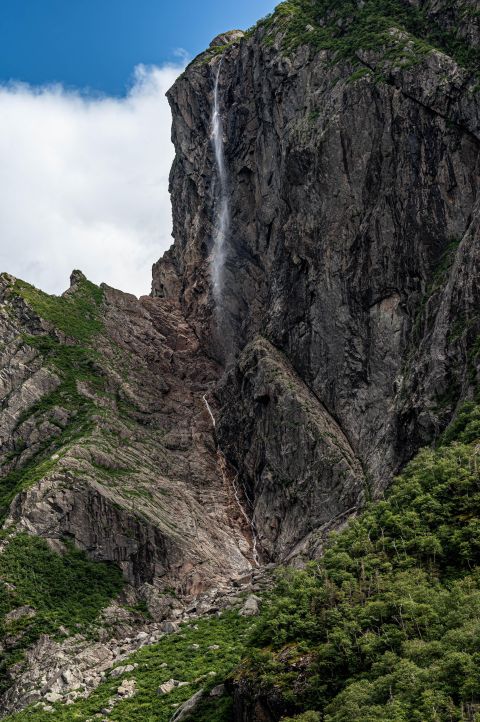
Yet, it wasn’t all bleak. Former SPAWN President, Keith Cormier, had success at Harry’s River, and Northern Labrador rivers reported good fishing. Bob Bishop, from the Salmonid Association of Eastern Newfoundland, had a particularly fruitful session on the Flowers River.
However, the fall fishery’s opening on the Humber, Gander, and Exploits Rivers has been subdued. Keith Cormier noted the usual flurry of activity on the Lower Humber is missing, likely due to fewer fish sightings.
In summary, the 2023 angling season in Newfoundland and Labrador stands out for its peculiarity. While we began slowly in Bay St. George, Central Newfoundland emerged as a beacon with promising returns, like the 28,521 fish at the Bishop Falls fishway on the Exploits River. Northern Labrador rivers also reported strong returns. But the Northern Peninsula and certain parts of the Southcoast and Avalon Peninsula faced disappointingly low returns. For more specific numbers, refer to DFO’s recent fishway counts.
There might be varied theories behind this year’s dwindling returns, but the overarching consensus points to climate change as a significant factor impacting wild Atlantic salmon.
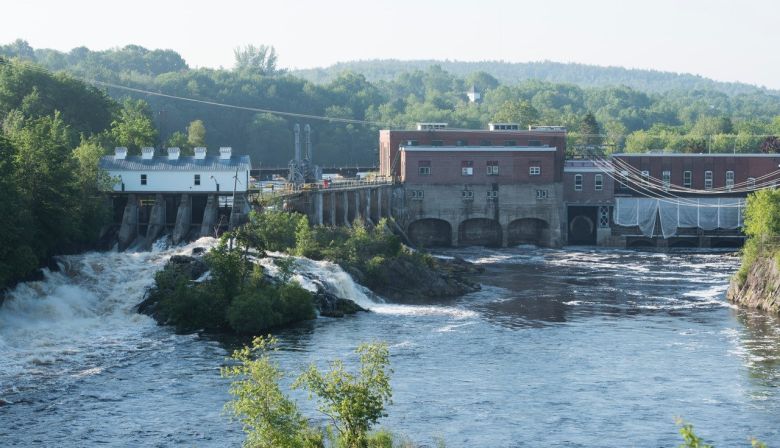
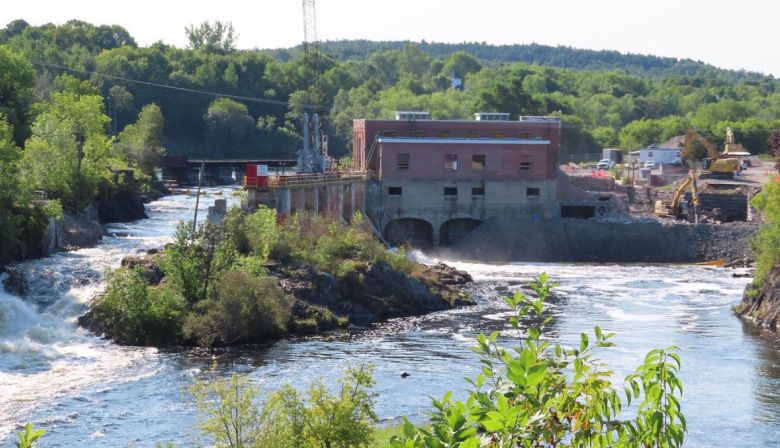
Martin Silverstone, ASJ Editor, reports:
North America’s first hydro dam comes down also first ever dam to be removed by NB Power.
The Milltown Generating Station was the first-ever hydroelectric dam to be built in North America. It was originally constructed on the St. Croix River to provide power for a cotton mill. The St. Croix defines the border between the United States and Canada. Towns such as St. Stephen and Milltown on the Canadian side and Calais on the U.S. have always shared economic fortunes.
The cotton mill for example was in Canada, but citizens from both sides of the border worked there. Now as the dam comes down, NB Power must seek approval from agencies in two countries to allow the work to proceed.
And it has been proceeding on schedule, despite the difficulties involved. Tom Moffatt, former communications specialist at ASF, reports that the dam has already been breached and the river flows freely where one of the spillways once blocked its path.
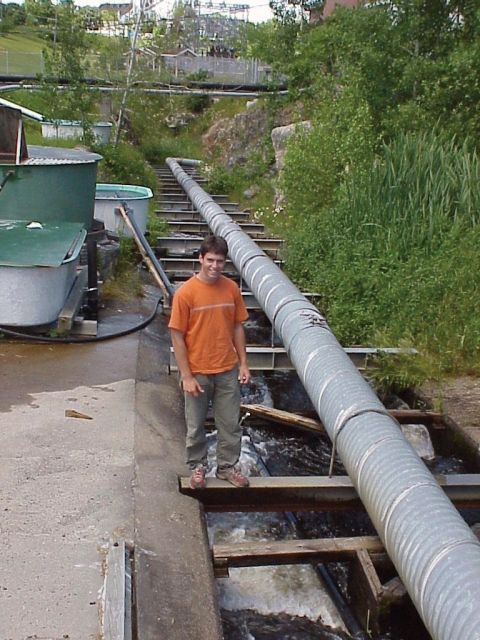
This is the first hydroelectric dam removed in New Brunswick. The dam provided less than one percent of the provinces power needs.
The dam did have a fish ladder, but it was out of date, and according to Moffatt, “never functioned properly.” With the dam and the power station gone, migrating fish like Atlantic salmon and alewives will now have access to 16 kilometres of spawning habitat.
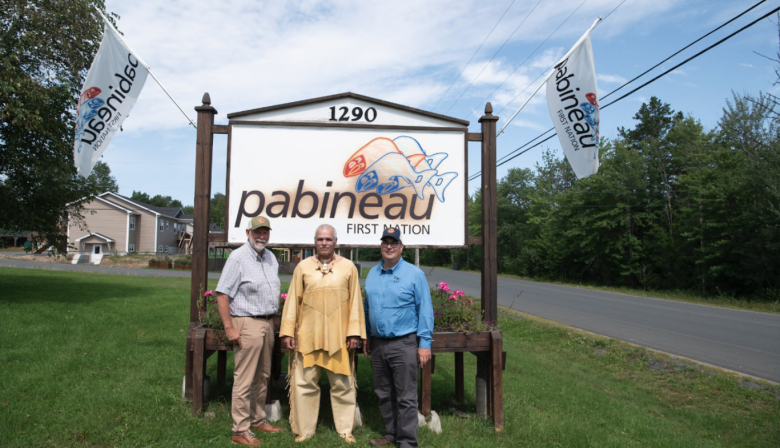
See the Dungarvon fish barrier report, here!
See the NW Miramichi fish barrier report, here!
Serge Collin, New Brunswick Program Director, reports:
It was a great honor to be welcomed and hosted by Pabineau First Nation for the Wild Salmon Watershed launch event for the Nepisiguit River.
Custom to the Pabineau First Nation, all attendees were welcomed to be part of a traditional prayer and song, setting the tone for a nice celebration.
With all of the different speeches from dignitaries and partners, each with a profound interest and engagement in seeing this program come together, I think it’s Robert Kryszko, Director of Special Programs with Pabineau First Nation, that summed it up best by stating in a simple and humorous way that ”What we are launching here today will be PARR of something great.”

After speeches, some mingling, and a nature walk to the salmon counting fence installations, the event concluded with a wonderful lunch prepared and offered by the Pabineau First Nation community, and a final prayer.
Attendance was great; not only were members and staff of the partnering organizations present, but several other important partners and stakeholders, such as representatives from the Department of Fisheries and Oceans, the New Brunswick Salmon Council joined us as well.
ASF is very proud to be partnering with both Pabineau First Nation and the Nepisiguit Salmon Association for many reasons. But the one that stands out the most is their decades-long partnership, where together they have created an incredible conservation success story that started from the devastation of the salmon population from a mine waste incident in the 60’s and 70’s, to working together towards a successful restoration, to one of the healthiest Atlantic salmon populations in the province. Adding the support of the excellent science work by the Gespe’gewa’gi Institute of Natural Understanding (GINU), this will enable all involved to ensure that salmon and the surrounding communities are protected and conserved for the next 7 generations, and more….
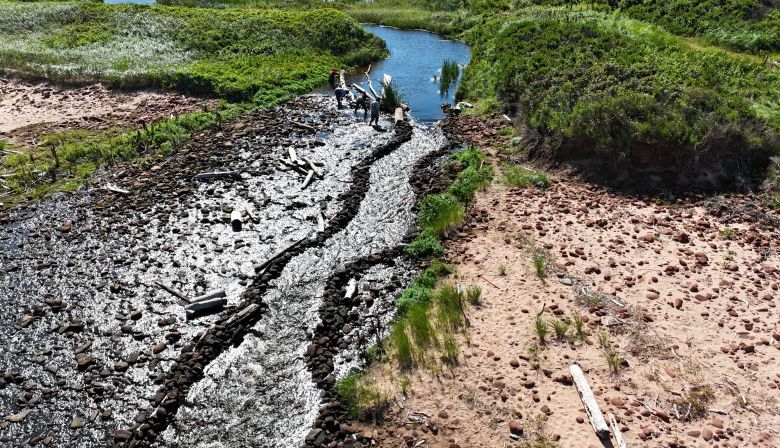
Nathan Wilbur, Director of Regional Programs, reports:
ASF’s Kris Hunter and Nathan Wilbur recently collaborated with local PEI organizations to address the challenge of salmon navigating past barrier beaches. PEI houses numerous streams that are home to a distinct genetic strain of Atlantic salmon. However, the changing nature of these beaches occasionally blocks salmon from reaching their freshwater spawning locations.
In partnership with the Souris and Area Branch of the PEI Wildlife Federation and the Canadian Wildlife Federation, we prioritized improving fish passage in several of PEI’s eastern streams. Swiftly acting on this, Souris Wildlife initiated the first project at Bear River. Here, they handcrafted a channel to enhance water flow and create a concentrated, deeper path across the beach, facilitating salmon movement. Recognizing the beach’s evolving nature, this solution is not intended to be permanent but will instead be a recurring annual effort. This subtle method ensures salmon can migrate effectively, just in time for this fall’s spawning season.

John Burrows, Executive Director of US Programs, reports:
Atlantic Salmon Benefit from Stream Restoration
13.9 miles of stream habitat are reconnected in the Pleasant River Headwaters Forest
Piscataquis County, Maine – Access to 13.9 miles of stream habitat has been restored in the Pleasant River Headwaters Forest for endangered Atlantic salmon and Eastern brook trout following the completion of 14 road-stream-crossing projects this summer.
Thirteen of these projects took place on small streams on land owned by the Appalachian Mountain Club (AMC) in the heart of the 100-Mile Wilderness and the final project was located at Henderson Brook in the corridor of the Appalachian National Scenic Trail (AT). The 100-Mile Wilderness is part of the largest contiguous expanse of undeveloped forest in the Eastern United States. This is an area with a high resilience to climate change and an expansive number of lakes and streams with excellent habitat for cold-water fish.
Two of the crossings were decommissioned, and 12 were replaced with open-bottom culverts or large bridges. All the crossings were designed to withstand extremely high stream flows associated with severe weather events, providing resilience for the vital road network connecting recreational lands and commercial forests with the communities of Greenville and Brownville.
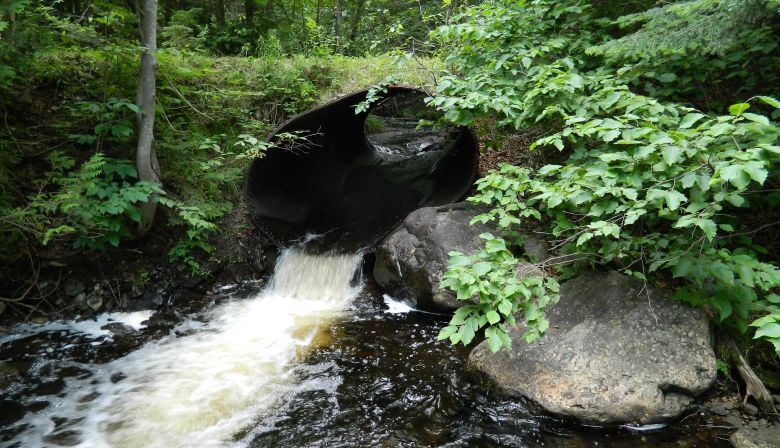
“The habitat restoration work taking place in the Pleasant River Headwaters Forest is proof that the Appalachian Mountain Club (AMC)’s Maine Woods Initiative model works,” said Steve Tatko, AMC Vice President of Conservation, Research and Land Management and area native. “We are grateful to work with partners to implement conservation projects that integrate recreation, outdoor education, and rural economic development. Paired with our forest management program, watershed restoration expands the impact that our forests have on global ecosystems. Returning sea-run fish to their native homes in a forest that is forever protected is as much about the environmental benefits as it is the right thing to do. “The Appalachian Mountain Club is honored to deliver on its mission to foster the protection, enjoyment, and understanding of the outdoors in this way.”
“We are thrilled to be a partner in these projects with AMC,” said John Burrows, ASF’s Executive Director for U.S. Operations. “The Pleasant River has the largest amount of accessible, high-quality habitat for Atlantic salmon in the Penobscot. A quarter century ago, Atlantic salmon could not reach the upper Pleasant because of a gauntlet of 5 dams between Brownville and Veazie. Only one of those dams remain, and Atlantic salmon are now spawning in the upper Pleasant River.”
“Reopening rivers and streams to fish migration is critical in the recovery of species like Atlantic salmon,” said Carrie Selberg Robinson, director of the NOAA Fisheries Office of Habitat Conservation. “NOAA is proud to be supporting the work of the Atlantic Salmon Federation and Appalachian Mountain Club to reconnect habitat on the Pleasant River.”
These crossing projects are supported by a grant from NOAA Fisheries with funding made available through the Bipartisan Infrastructure Law and Inflation Reduction Act. Through this funding, NOAA is working to support fisheries and coastal communities across the country through habitat restoration and climate resilience efforts.
The projects are being constructed by Sargent Corporation from Orono, Maine, and by William London and Son, of Milo, Maine. Additional partners include the Maine Department of Marine Resources, The Nature Conservancy in Maine, the Appalachian Trail Conservancy, the National Park Service, and Acadia Civil Works.
In 2024, ASF and AMC will complete an additional 12 crossings in the Pleasant River Headwaters Forest.
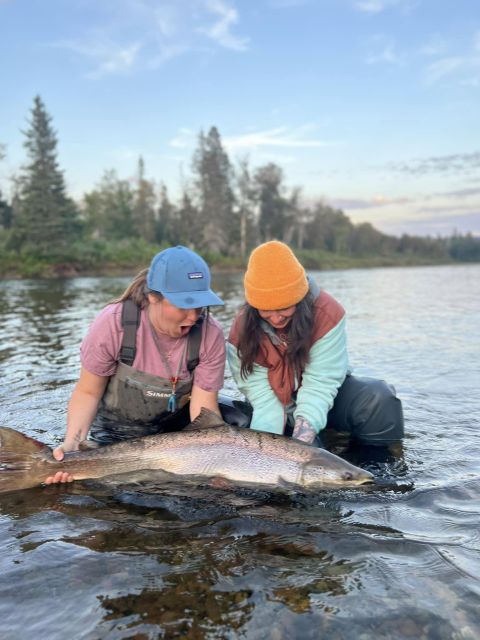
Charles Cusson, Directeur québécois, Fédération du saumon atlantique.
J’ai fait le tour de la Gaspésie depuis mercredi dernier, Matapédia, Bonaventure, York et Madeleine.
Grâce à des précipitations récentes, les niveaux et débits sont parfaits, mais il y a eu du temps très chaud qui a ralenti la pêche sportive. En quittant la York mardi soir, les saumons ont commencé de démontrer un regain de vie. Les saumoniers qui vont taquiner salmo dans les prochains jours vont s’amuser.
Ce fut un plaisir pour moi de rencontré en personne des gens qui ont contribué des photos à plusieurs reprises cette saison. Il s’agit de Claudel Francoeur et Nicole Boutin, de Grande-Rivière, des amis du saumon atlantique et des passionnés des activités de plein air . Mon bon ami, Donald Bourgouin, de Gaspé, s’est joint à nous pour le diner avec Claudel et Nicole a la fosse Montagnard de la rivière York.
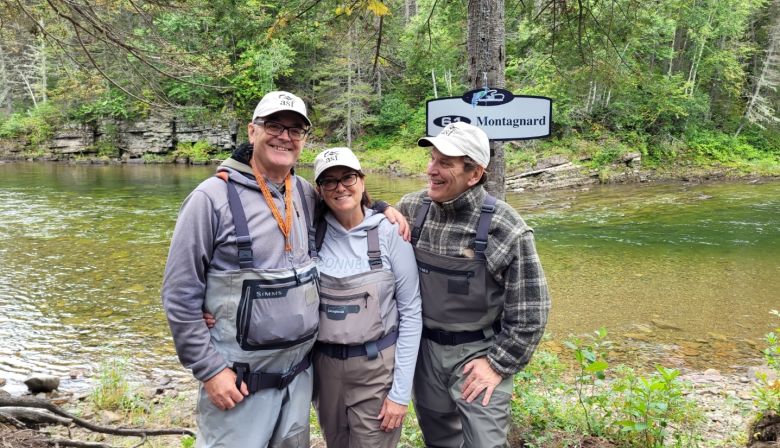
I have been touring the Gaspésie region since last Wednesday and visited the Matapedia, Bonaventure, York and Madeleine rivers.
Thanks to recent rainfall, levels and flows are perfect, but there has been some very hot weather which has slowed down sport fishing. Leaving the York on Tuesday evening, the salmon began to show renewed life. Salmon anglers who are going to be chasing salmo in the coming days are going to have fun.
It was a pleasure for me to meet in person people who contributed photos several times this season. They are Claudel Francoeur and Nicole Boutin, from Grande-Rivière, friends of the Atlantic salmon and enthusiasts of outdoor activities. My good friend, Donald Bourgouin, from Gaspé, joined us for lunch with Claudel and Nicole at the Montagnard pool on the York River.